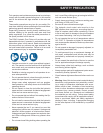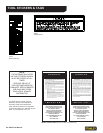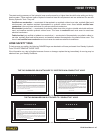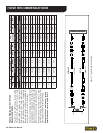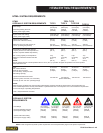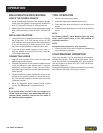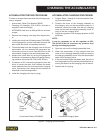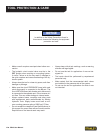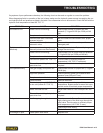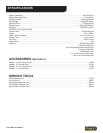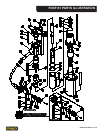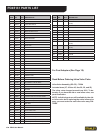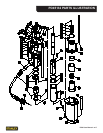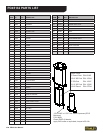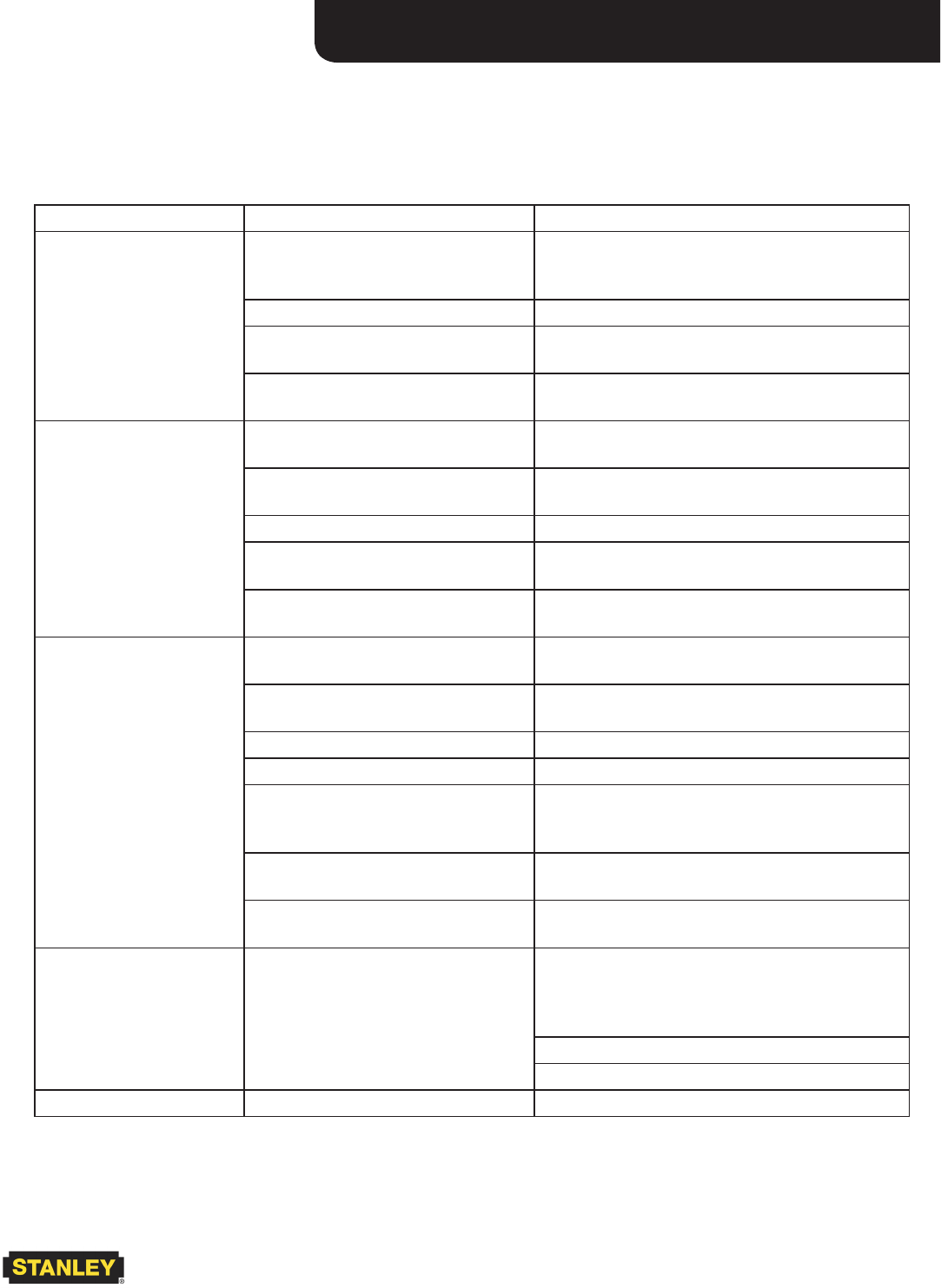
PD45 User Manual ◄ 13
TROUBLESHOOTING
If symptoms of poor performance develop, the following chart can be used as a guide to correct the problem.
When diagnosing faults in operation of the tool, always make sure the hydraulic power source is supplying the cor-
rect hydraulic ow and pressure as listed in the table. Use a owmeter know to be accurate. Check the ow with the
hydraulic uid temperature at least 80 °F/27 °C.
PROBLEM CAUSE SOLUTION
Tool does not run. Power unit not functioning. Check power source for proper ow and
pressure (7–9 gpm/26–34 lpm, 2000 psi/140
bar).
Couplers or hoses blocked. Remove restriction.
Pressure and return line hoses
reversed at ports.
Be sure hoses are connected to their proper
ports.
Mechanical failure of piston or
automatic valve.
Disassemble post driver and inspect for
damaged parts.
Tool does not hit
effectively.
Low accumulator charge (pressure
hose will pulse more than normal).
Recharge accumulator. Replace diaphragm if
charge loss continues
Power unit not functioning. Check power unit for proper ow and pressure
(7–9 gpm/26–34 lpm, 2000 psi/140 bar).
Couplers or hoses blocked. Remove restriction.
Fluid too hot (above 140 °F/60 °C). Provide cooler to maintain proper oil
temperature (130 °F/55 °C maximum).
The anvil is not sliding freely in the
post driver foot.
Remove, clean, lubricate and replace anvil as
required.
Tool operates slowly. Low gpm supply from power unit. Check power source for proper ow (7–9 gpm/
26-64 lpm).
High back-pressure. Check hydraulic system for excessive back-
pressure (over 250 psi/17 bar).
Couplers or hoses blocked. Remove restriction.
Orice blocked. Remove restriction.
Fluid too hot (above 140 °F/60 °C)
or too cold (below 60 °F/16 °C).
Check power source for proper uid
temperature. Bypass cooler to warm uid up or
provide cooler to maintain proper temperature.
Relief valve set too low. Adjust relief valve to 2100–2250 psi/145–155
bar.
The anvil is not sliding freely in the
post driver foot.
Remove, clean, lubricate and replace as
required.
Tool gets hot. Hot uid going through tool. Check power unit. Be sure ow rate is not too
high causing part of the uid to go through the
relief valve. Provide cooler to maintain proper
uid temperature (140 °F/60 °C max).
Check relief valve setting.
Eliminate ow control devices.
Oil leakage on post. Lower piston seal failure. Replace seal.



